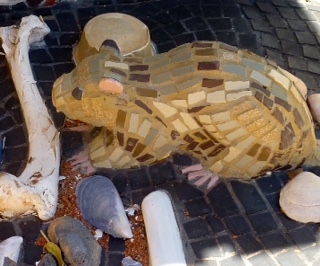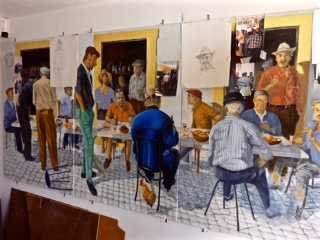Lynne Booker July 2012

When he was 18, Liverpool-born Cliff Moughtin was advised that his proposed career of painter was too difficult as a means to earn his living. Because the representation of buildings is so close to painting, his second career choice was architecture, which has led him to the exciting intellectual theory of urban design, in the practice of which he has worked in many developing countries.
Inspiration for his second career choice came from Professor Reginald Ellersley Manifold McCaughan (Mac) of the Department of Civic Design, Liverpool University. After his Bachelor’s degree in Architecture and his Master’s in Civic Design in the early 1950’s, Cliff spent time in developing countries such as Singapore, Ghana, Nigeria and the Sudan. Living, studying and working with the local people he gained insights into the inter-relationship between built form and culture. Returning to Liverpool in the mid 60’s, Cliff worked closely again with Mac at Liverpool University before becoming professor in his own right at The Queen’s University of Belfast and then at The University of Nottingham.
Born with a keen eye for line, Cliff at the early age of 2 was taught to sketch by his father, 78 years ago. Having just celebrated his 80th birthday, Cliff is never far from his pencils and paintbrushes and has never stopped interpreting and recording his impressions in paint.
When Cliff suggested to his wife Kate that a holiday cottage would be a great idea for their retirement, he envisaged a stone cottage in Derbyshire or somewhere in the Pennines. But having caught sight of an advertisement of a farmhouse in the Eastern Algarve, they determined to investigate it. Since Kate had lived the first 13 years of her life in a farmhouse in Ireland, she was not thrilled with the prospect of spending some of her retirement years in a similar environment. Yet after winging her way to Faro Airport, she found that she had fallen in love with the city of Tavira, and in its surrounding countryside, Kate and Cliff found the ideal location for their retirement retreat. Cliff’s latest series of paintings reflects their life in their Portuguese weekend cottage.
As he put his head around the door of his first post-retirement art class, Cliff was greeted with the sexist comment, Thank goodness; we’ve got a man! At these art classes, he studied water colour painting and oil painting as well as mosaics. His first mosaics were the size of beer mats but typically Cliff wanted to do something bigger. His magnum opus has been ten years in the making in the area behind the weekend cottage.This deeply allegorical piece depicts St Patrick on the reverse, while the obverse shows images from Celtic mythology together with the flora and fauna of the Eastern Algarve.
 Cliff´s 3D Mosaic of St Patrick
Cliff´s 3D Mosaic of St Patrick Detail on the Mosaic - The Rat
Detail on the Mosaic - The RatAlthough he paints only for fun, Cliff takes his art seriously and always tries to achieve the best he can. By no means the first foreigner to paint the so-called Roman Bridge and other Tavira scenes, he has found inspiration not only in the built environment of the city but also in the Portuguese people themselves. Cliff’s paintings show market scenes from Tavira and he has also portrayed the Portuguese friends he has found in his rural location. He has exhibited three times in the Brisa do Rio restaurant in Tavira, and also at the University of Nottingham and at the prestigious Nottingham Society of Artists, of which he is a member. He plans to improve on his mega project – the mosaic of St Patrick – after which there is a long list of art projects awaiting his attention.

Not content with the visual arts, Cliff took a Creative Writing course with The Open University. Using his new learning, he has just completed several short stories and the first draft of a novel, based on his life in Wales during the war years. After writing prolifically during his academic career, Cliff found writing fiction completely different and a great challenge, in which he relied heavily on Kate´s expertise in English. Kate is a graduate in English Literature and a psychotherapist by profession and her help in syntax and grammar was invaluable for the novel and she also provided enormous editorial help in his academic works. Cliff has published the definitive book on Hausa Architecture and five textbooks on Urban Design (1 Method and Technique; 2 Green Dimensions; 3 Ornament and Decoration; 4 Street and Square. The last published book in the series, Health and the Therapeutic Environment was written in collaboration with an Italian academic Dr Paula Signoretta and of course Kate). Anyone keen to discover Cliff’s views on the architecture of Tavira may find them in chapter 8 of Urban Design: Street and Square (third edition 2003) in which he and local architect Miguel Mertens trace the history of urban development in Tavira and analyse its form.
In selecting the hills of the Algarve for their holiday home, Cliff and Kate have had the usual expatriate experience of designing and building their own weekend cottage and each of them is committed to this community for part of the year. Cliff is so enthusiastic still for Town and Country Planning that I have come to regret that I did not follow his course at university. I wish I could remember if it was Cliff who interviewed me!
